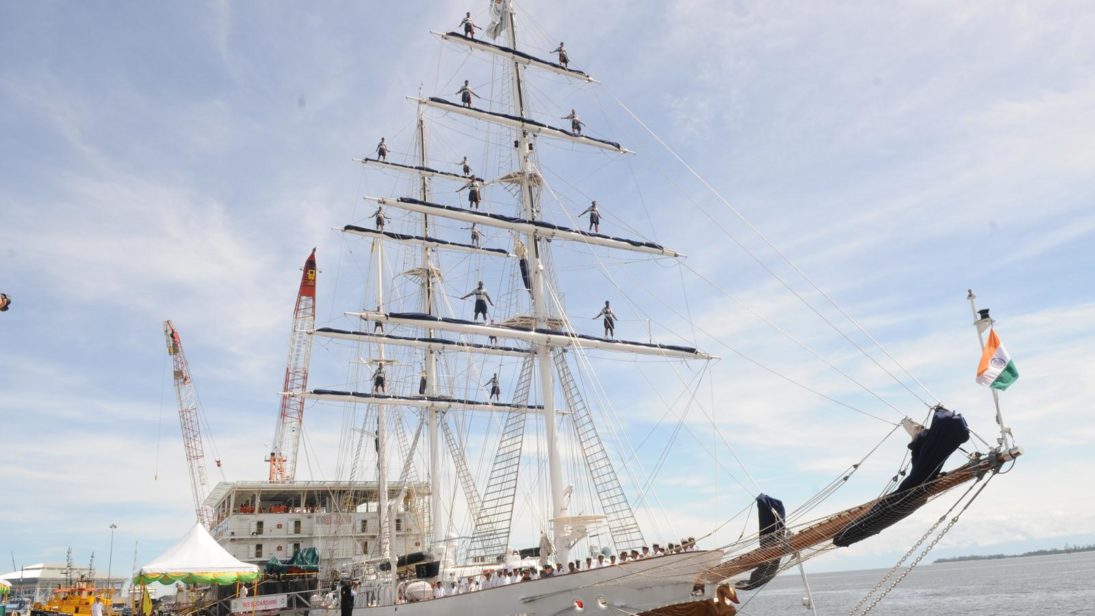
The Indian Ocean, an erstwhile “zone of peace,” is beginning to witness competition for strategic space. This change in security dynamics is only natural given the growing economies of Asia, increasing need for energy imports, importance of securing critical sea lanes of communication, and expanding strategic ambitions. As China and India continue to rise, the competition is shifting from their continental interests to their maritime goals. This change in geopolitics also requires a shift in India’s maritime foreign policy, and brings into focus the need to engage more with friendly navies.
In the post-Cold War period, till about a decade ago, New Delhi had been fairly comfortable in its role and position in the Indian Ocean, leading to the Indian Navy working more or less independently. Although India maintained naval links through exercises such as MILAN, and at the bilateral level with nations such as the United States, there was no pressing need for New Delhi to take on a leading role in regional affairs. A calm and quite maritime environment allowed New Delhi to focus on its continental borders, which have been simmering with tension since Partition. Additionally, most nations within India’s immediate maritime neighborhood looked to New Delhi for its security and stability, making India a dominant power. The Indian Navy’s role as one of the first responders to natural disasters in the Indian Ocean region (IOR) placed New Delhi at the high table among the littorals. At the regional level, New Delhi played its part in the Indian Ocean Rim Association and even scripted the Indian Ocean Naval Symposium (IONS). In essence, India had no rivalry with any of the Indian Ocean players, resident players such as the smaller island states and Australia, or non-resident states such as the United States and France.
However, the security environment in which India had based its maritime strategy quickly changed. The 2008 Mumbai terror attacks originating from the Arabian Sea revealed all of India’s coastal security vulnerabilities. Prior to the attacks, India did not require expansive coastal security measures, but today it is one of the most critical aspects of India’s evolving maritime outlook. Strategically too, Sino-Indian competition is beginning to emerge in the maritime domain, with Beijing’s economic expansion in the IOR. China’s commercial initiatives are quickly making the People’s Liberation Army Navy (PLAN)’s presence in these waters a reality, an event that was only a far possibility a decade ago. Submarine dockings in the ports of Sri Lanka and Pakistan have raised a few red flags in New Delhi, but not enough to change policies in its defense establishments.
The point is, India’s prominence in the Indian Ocean was to an extent facilitated by the security structure in the IOR, which lacked an imminent strategic or security threat to New Delhi’s interests. That scenario is now quickly changing, and India will have to re-evaluate its rules of engagement in the maritime domain.
Some measures have been taken to cope with the new emerging security dynamics. A new strategy, a renewed enthusiasm to re-connect with the littorals, and playing a more active role in regional affairs are a few. However, there is a missing link that should accompany new maritime policies and fresh documents—a new strategic thinking in India’s defense structure. New Delhi will have to shift its traditional approach on maritime security, and instead of taking a reactive approach, it will have to be proactive. It will have to break free of traditional notions of limited engagement, and make cooperation and collaboration the basis for its new Indian Ocean strategy. Instead of looking at increased engagement as a reaction to Chinese presence in the Indian Ocean, India will have to view it as a crucial step to address the security changes in its area of strategic interest. The changing security architecture also means a new discourse on rules and norms of behavior—a debate New Delhi will have to shape by voicing its concerns and challenges.
Most importantly, India will have to start debating concepts such as burden sharing in the Indian Ocean with like-minded nations to establish an architecture favorable to its strategic interests. New Delhi will have to strengthen existing naval links in maritime Asia and form new ones. As geopolitics begin to take center stage in the Indian Ocean, India, in effect, will have to engage, initiate, and lead the security discourse in Asia’s waters.
***
Image 1: Indian Ministry of External Affairs, Flickr
Image 2: Vikas Swarup-MEAIndia, Twitter



